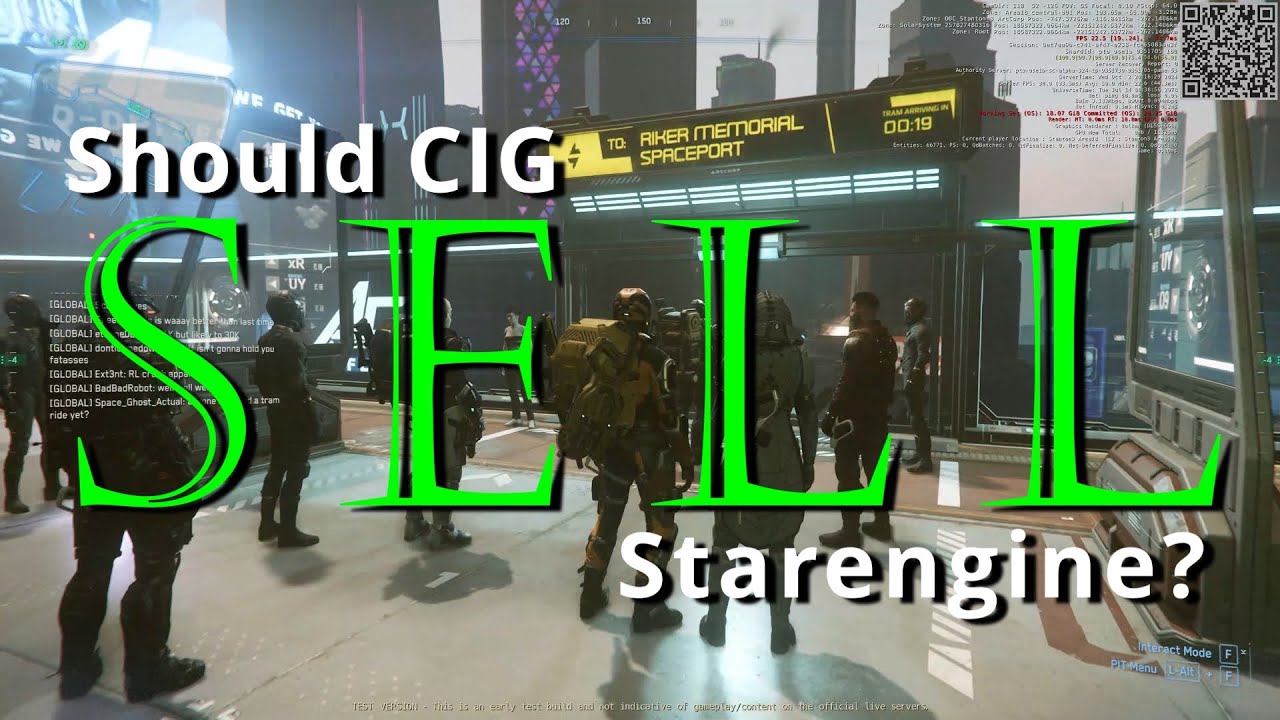In the video, Danny Raymond discusses the recent stress test of Star Citizen’s server meshing capabilities, noting that while the technology is operational, it struggles under high player density and suggests implementing a system of main and overflow shards to improve performance. He also explores the implications of CIG potentially selling their proprietary game engine, Starengine, advocating for strategic partnerships instead to retain control and avoid empowering competitors.
In the video, Danny Raymond discusses the recent public stress test conducted by Cloud Imperium Games (CIG) on their server meshing capabilities for Star Citizen. He shares his personal experiences during the test, noting that while the initial server with 100 players functioned well, attempts to log into a 1,000 player shard resulted in crashes due to high player density. After a break, he returned to find the servers running smoothly with 500 players, indicating that while the server meshing technology is operational, it still struggles under peak loads. He suggests that CIG needs to address the issue of maintaining server performance during lower player counts, proposing a system of main and overflow shards to manage user load effectively.
Raymond then shifts focus to the broader topic of whether CIG should sell their proprietary game engine, referred to as “Starengine,” which encompasses their backend technologies. He explains the complexity surrounding the ownership and licensing of the engine, as it is based on Amazon’s Lumberyard, which itself derives from CryEngine. This raises questions about whether CIG has the rights to resell the engine, and he expresses skepticism about Amazon allowing such a resale.
The discussion continues with an exploration of the four potential paths companies can take with their technology: making it freely available, keeping it proprietary, commercializing it, or forming strategic partnerships. He highlights the pros and cons of each approach, particularly emphasizing the potential pitfalls of commercialization, such as the need for ongoing support for a user base and the risk of inadvertently funding competitors.
Raymond points out that if CIG were to sell Starengine, it could lead to competitors creating similar games that could overshadow Star Citizen. He suggests that a more strategic approach would be to form partnerships rather than outright sales, allowing CIG to retain control over their technology while still generating revenue through joint ventures with other developers interested in using the engine for unique projects.
Finally, he provides an update on ongoing ship giveaways related to Star Citizen, mentioning a special membership level to support live coverage of the upcoming CitizenCon event. He encourages viewers to participate in the giveaways and interact with the channel, concluding with a playful nod to the fictitious game he imagined would be the first developed if Starengine were sold. He signs off with a reminder to “fly safe” and stay engaged with the Star Citizen community.
